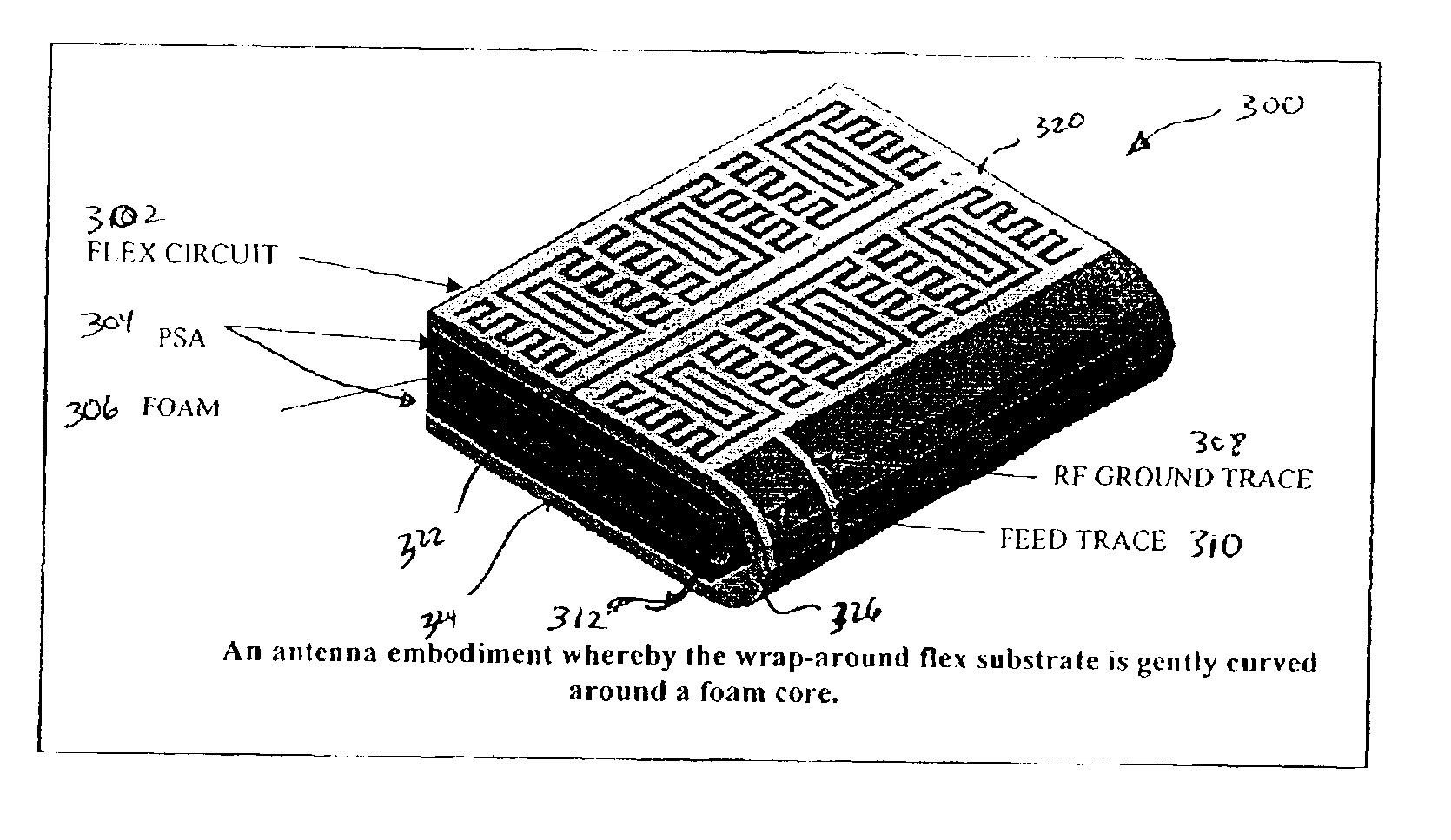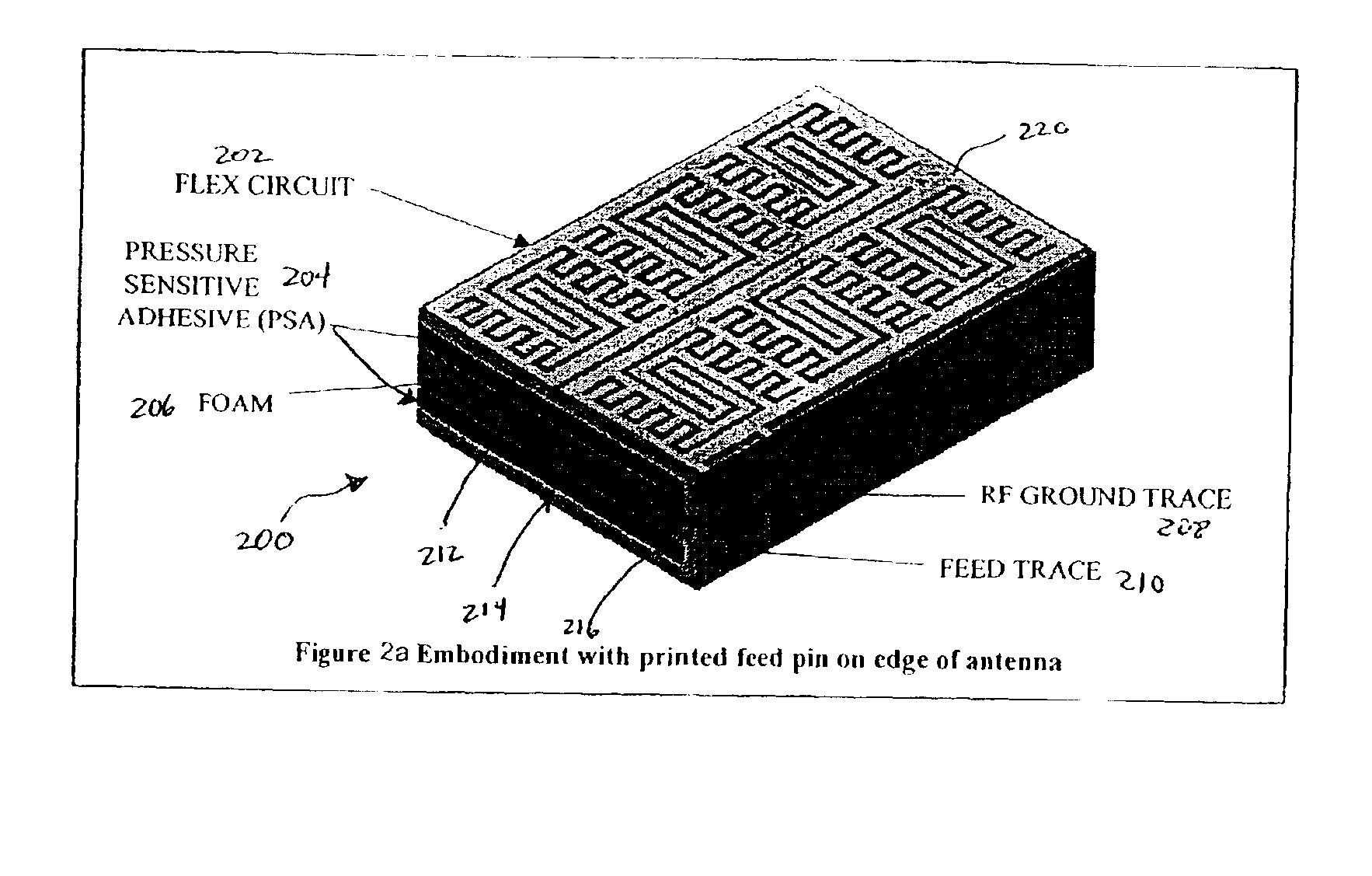Method for fabrication of miniature lightweight antennas
a lightweight, miniature technology, applied in the direction of individually energised antenna arrays, flexible aerials, collapsible antenna means, etc., can solve the problems of increasing the cost of existing antennas, and increasing the cost of manufacturing existing antennas. , to achieve the effect of reducing the total cost of these antennas and devices, reducing the cost of material or assembly labor, and reducing the total cos
- Summary
- Abstract
- Description
- Claims
- Application Information
AI Technical Summary
Benefits of technology
Problems solved by technology
Method used
Image
Examples
Embodiment Construction
[0051]Many patents and publications exist on techniques used to create low cost portable antennas. However, as of this writing, we are not aware of any approaches that can achieve as low a cost solution with as high a level of performance in such a small volume and weight. Present embodiments illustrate multiple, related, low-cost approaches to manufacturing antennas. Specifically, the class of antennas these techniques target are those described in provisional patent applications entitled U.S. patent application Ser. Nos. 10 / 211,731 and 10 / 242,087 entitled “Miniature Reverse-Fed Planar Inverted F-Antenna,” and “DC Inductive Shorted Patch Antenna.” Many antenna prototypes have been manufactured using a flex (polyimide) or FR4 top layer on a foam core, connected to ground and feed port by soldered wires.
[0052]Besides the antennas having a small volume, low weight, low-cost and a high-level performance, some of the present embodiments also illustrate antennas that are integrated into ...
PUM
 Login to View More
Login to View More Abstract
Description
Claims
Application Information
 Login to View More
Login to View More - R&D
- Intellectual Property
- Life Sciences
- Materials
- Tech Scout
- Unparalleled Data Quality
- Higher Quality Content
- 60% Fewer Hallucinations
Browse by: Latest US Patents, China's latest patents, Technical Efficacy Thesaurus, Application Domain, Technology Topic, Popular Technical Reports.
© 2025 PatSnap. All rights reserved.Legal|Privacy policy|Modern Slavery Act Transparency Statement|Sitemap|About US| Contact US: help@patsnap.com



